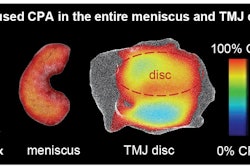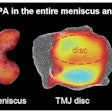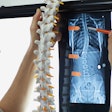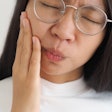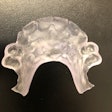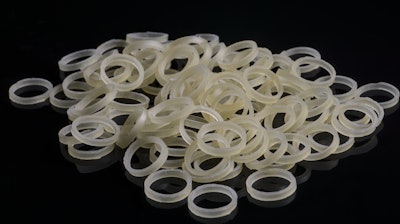
Using intermaxillary elastics with clear aligners in adults may cause temporomandibular joint disorders (TMDs) or worsen symptoms or pain associated with them. The study was published recently in the Journal of Oral Rehabilitation.
Clinicians should use the Diagnostic Criteria for Temporomandibular Disorders (DC/TMD)-Axis II Evaluation Forms to thoroughly evaluate and examine pain-related disorders and psychosocial status to help decide whether TMD will develop in clear aligner patients, the authors wrote.
“It is recommended that orthodontic treatment, including clear aligners, be carefully planned and monitored by a qualified orthodontist to minimise the risk of TMD-related issues,” wrote the authors, led by Dr. Giuseppe Minervini of the multidisciplinary department of medical-surgical and odontostomatological specialties at the University of Campani in Italy (J Oral Rehabil, December 2, 2023).
Though some research has suggested that using elastics may have an effect on the temporomandibular joint, the extent remains unclear.
To investigate the effect of elastics on patients with clear aligners and TMDs, 70 patients were recruited for the study. Of those, 40 adult patients being treated with clear aligners used elastics, and 30 patients who wore clear aligners did not use elastics. Also, the participants had to complete Axis II forms and other assessments, according to the study.
Those who were treated with clear aligners and elastics had significantly higher pain intensity, mastication, mobility, communication, and depression scores than those who didn’t use elastics (p < .05), they wrote.
Furthermore, patients who used elastics for fewer than six months had statistically significant higher depression scores than those who used elastics for more than six months (p < .05), the authors wrote.
Moreover, the study had limitations, including that patients may be affected by multiple factors when filling out the forms, including their desire to respond in a socially desirable manner, they wrote.
In the future, researchers may want to include physical and clinical exams of TMD in research, the authors wrote.
“In some cases, intermaxillary elastic forces have the potential to impact the TMJ and potentially worsen symptoms or pain associated with TMD, particularly when the elastics are not well adjusted or when pre-existing TMJ difficulties are present,” Minervini and colleagues wrote.




